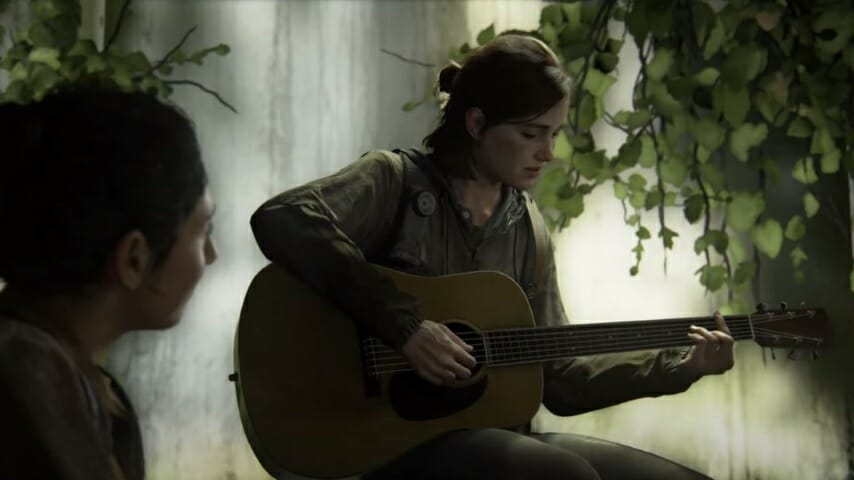The Best Guitar Chords in The Last of Us Part II

The Last of Us Part II is now out, and players around the globe are already discovering the best thing about the game: you play a guitar in it. Well, kind of. At different points throughout the game your character will grab a guitar, and you’ll be able to pick what chord they play while swiping the PlayStation 4 controller’s touchpad to strum. I am not going to say anything about the game’s story, or themes, or my own opinions about them just now, but I will say that, as somebody who’s owned a guitar since Meat Loaf refused to tell us the one thing he wouldn’t do for love, and as somebody who’s played that guitar at least once or twice since, I definitely appreciated the guitar stuff in this game—and more so than the “graphically murdering monsters, humans and dogs” stuff in this game.
If you wrangle it just right, you’ll get to play a lot of different guitar chords in The Last of Us Part II. There’s really no such thing as a bad guitar chord—well, except for one, which you’ll find out at the bottom of this piece—but some are still better than others. So let’s run down the best guitar chords you can play in this game, during those rare moments when it lets you play a guitar.
Oh, and here’s a big ol’ SPOILER ALERT: If you don’t want to know what guitar chords are in this game, you should stop reading right now. I’m not holding anything back when it comes to the guitar chords you can play in The Last of Us Part II, during the seven or so minutes out of its 35 hours where you play a guitar.
C
You can’t get much more classic than a C. You might recognize this bright, chiming major chord from almost every single song you’ve ever heard in your entire life, and the fact that you haven’t gotten sick of it yet is just a testament to its timeless power. Sure, we can say the exact same thing about a G, or an A, or an E, or hell, even a goddamned D—and trust us, we will—but there’s something just a little bit more special about a C. It’s like the difference between Cheers and Night Court—they’re both amazing, but Cheers just slightly more so. Cheers is a C chord in this scenario—even though, ironically, there’s no C chord in Cheers’s beloved theme song.
G
C might be the cuter, flirtier chord, but the G actually gets stuff done. Pretty much every major chord can sound transcendent when it’s left to ring out through the air, but the G outdoes the rest. Perhaps that’s because it’s a more responsible chord, often pulling double duty by supplying a legitimately deep bass note in the form of a, yes, G note. Sure, chords always have bass notes, but few of the open chords have one as heavy as the G, which just makes the chord feel more formal and definitive. I don’t want to call the G “workmanlike”—that diminishes the beauty and grace of this all-important chord—but a nice, round G always seems to carry more of a song’s load than most chords. You think CCR’s “Fortunate Son” would rumble in so righteously if it didn’t kick off with a G? If you want a song to grab your listeners by the eardrums and shout “HEY! This is a song!,” you should start it with a G. Fun fact: The G was funnyman Buddy Hackett’s favorite guitar chord.